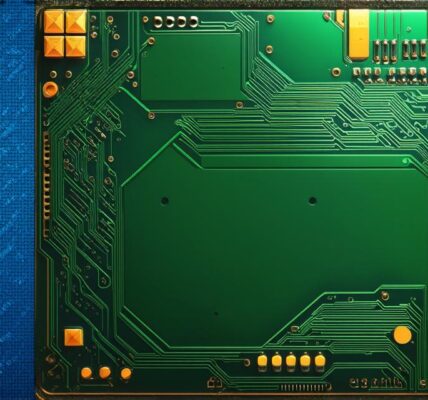Introduction: A Brief History of Video Games
To fully appreciate the significance of “Pong,” it is important to understand the evolution of video games leading up to its creation. The roots of video gaming can be traced back to the early 1950s, when computer scientists like William Higinbotham began experimenting with simple games and simulations as a means of teaching programming concepts.
In the following decades, technology advanced rapidly, leading to the development of more sophisticated gaming systems. In the 1960s, mainframe computers like the IBM 704 were used to create games like “OXO” (later known as noughts and crosses) and “Tennis for Two.” The advent of smaller, more affordable personal computers in the 1970s paved the way for a new era of gaming, with titles like “Spacewar!” and “Morris the Mole” captivating audiences.
The Birth of Pong: An Innovative Approach to Gaming
In 1972, Bushnell assembled a team of talented engineers and designers at Atari’s headquarters in Santa Clara, California. Among them was Steve Russell, an MIT graduate who had previously worked on the game “Spacewar!” and was tasked with creating a new ping-pong simulation for the company.
Russell’s initial concept for the game was based on a simple physics engine that would simulate the movement of a ball in a table tennis arena. However, as he delved deeper into the project, he realized that this approach would not be sufficient to create an engaging and immersive gaming experience. To address this challenge, Russell enlisted the help of his colleagues at Atari, including Allan Alcorn and Dave Ralston.
Together, they developed a new approach that incorporated elements of both physics and artificial intelligence. This innovative design allowed the ball to behave realistically, bouncing off walls and surfaces in a manner that closely mirrored real-life table tennis. Additionally, they implemented a basic form of AI that would enable the opposing player to adapt their strategy based on the player’s performance, further enhancing the game’s realism and challenge.
Pong’s Release and Initial Success: A Cultural Phenomenon
On November 29, 1972, “Pong” was released as an arcade game in a small bar in San Francisco, California. The initial reception was modest, with only a handful of patrons drawn to the novelty attraction. However, word quickly spread about the game’s unique blend of physics and AI, and soon it became a must-play destination for video game enthusiasts across the city.
As the popularity of “Pong” grew, Atari began to see the potential for commercial success. In 1973, they released a home version of the game, which quickly sold out upon release. The following year, they struck a deal with Sears Roebuck to distribute the game nationwide, cementing its status as a cultural phenomenon.
The Impact of Pong on Gaming and Popular Culture
“Pong’s” success was not limited to its commercial performance; it also had a profound impact on the video game industry as a whole. The game’s innovative approach to physics-based gaming paved the way for future simulation games, such as “Space Shuttle: The Video Game” and “Apollo 13: The Video Game.” Additionally, the incorporation of AI into the game’s opponent’s strategy opened up new possibilities for competitive gaming, leading to the development of multiplayer games like “Star Fox” and “Sonic the Hedgehog.”
The Legacy of Pong: Continuing to Inspire Gamers and Developers
Today, “Pong” remains an enduring symbol of the early days of video game history. The game has been remastered and reimagined countless times, with modern iterations featuring enhanced graphics, improved physics engines, and new game modes. These updates have introduced a new generation of players to the classic gameplay experience, ensuring that “Pong’s” legacy continues to endure.
Moreover, the innovations pioneered by the “Pong” team at Atari have inspired countless video game developers throughout history. The game’s emphasis on realism, AI, and multiplayer elements has been replicated in countless titles, demonstrating its lasting impact on the medium.
Conclusion: A Timeless Classic That Continues to Captivate
In conclusion, “Pong” is a testament to the ingenuity and creativity of the early video game developers at Atari. The game’s innovative approach to physics-based gaming, AI, and multiplayer elements has left an indelible mark on the medium, inspiring generations of gamers and developers alike. As we continue to explore the depths of video game history, “Pong” will undoubtedly remain a cornerstone of our collective cultural memory, a shining example of what can be achieved when imagination and technology converge.





